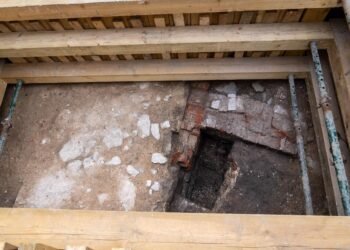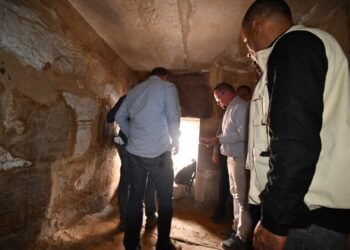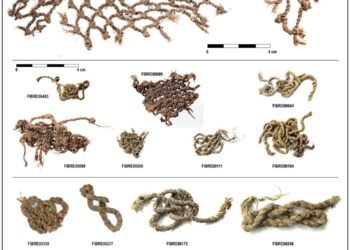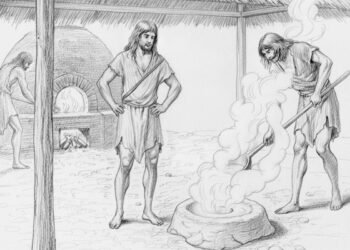Archaeologists excavating an ancient Egyptian cemetery in Amarna have uncovered a rare find—a mature ovarian teratoma within the pelvis of a woman who lived over 3,000 years ago, according to a Live Science report.

This remarkable discovery, detailed in a study published in the International Journal of Paleopathology by Gretchen Dabbs, a bioarchaeologist at Southern Illinois University Carbondale, provides information about the medical conditions of ancient Egyptians and the cultural practices surrounding health and fertility.
The woman, estimated to be between 18 and 21 years old, was buried in a shaft and burial chamber in the North Desert Cemetery of Amarna.
Amarna, the archaeological site where the discovery was made, was a short-lived city on the eastern bank of the Nile River, serving as the center of Pharaoh Akhenaten’s worship of the sun god Aten. Despite its grand temples and palaces supporting a population of 20,000 to 50,000, the city was abandoned within a decade after Akhenaten’s death in 1336 BCE.
The teratoma, a bony mass about the size of a large grape, contained two deformed teeth and is the oldest known example of this rare tumor, the fifth archaeological case reported globally. Teratomas, tumors composed of various tissues like muscle, hair, teeth, or bone, can be benign or malignant and are typically found in ovaries or testicles. In the present day, their removal is the standard treatment.
The placement of the woman’s left hand, adorned with a gold ring featuring the image of Bes—a deity associated with childbirth, fertility, and protection—above the teratoma suggests a potential attempt to invoke Bes for protection or fertility. According to Dabbs, this may indicate the woman was trying to alleviate pain or other symptoms associated with the teratoma, or seeking assistance in conceiving and giving birth.
“By 18-21 years, this individual probably would have been someone’s wife,” but there is also “little doubt she was working in some fashion,” Dabbs told Live Science in an email. Previous research at Amarna suggests that women of this age were engaged in diverse occupations, ranging from state-level construction projects to brewing beer or managing household gardens and livestock.
The team plans to conduct further analyses on the skeletons excavated from the North Desert Cemetery, exploring potential biological relationships among the buried individuals and investigating other Egyptian burials with magico-medical objects.






















